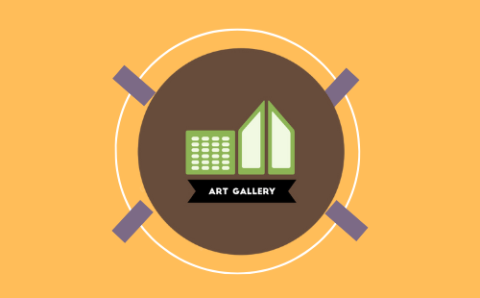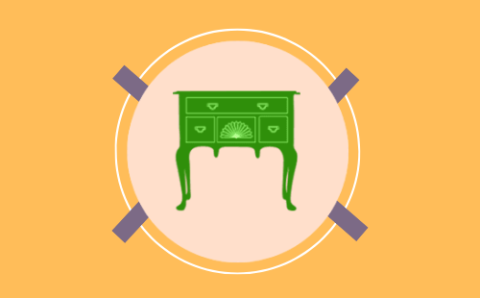Ceramics designer
November 12, 2019 2022-09-05 7:48Ceramics designer
Ceramics designer
Ceramics designer
Ceramics designers create designs for a range of pottery objects that are then made by shaping and firing clay
As a ceramics designer, you’ll create designs for a range of objects and work with materials such as clay, porcelain, bone china and stoneware to make the products. You’ll usually also paint or glaze the item to finish it off.
Alternative titles for this role include ceramicist and potter.
Types of ceramic design
You may produce objects such as:
- bathroom fixtures
- ceramic sculpture pieces
- domestic and commercial tableware and kitchenware
- garden ceramics
- giftware
- jewellery
- wall and floor tiles.
If you work for a large company you’ll interpret a product brief and turn it into a commercially-successful design for mass production.
In a self-employed capacity, or if working for a small company, you’re more likely to both design and make your own, one-off or limited edition designs. However, there is some crossover, and so you could also undertake design commissions for major companies, providing a design to be mass-produced elsewhere.
Ceramics as a material has a vast variety of options when it comes to career paths, from industrial design spanning architectural ceramics to domestic wares, to studio craft, from sculpture to studio pottery.
Clay is a very diverse material and the possibilities are close to endless. Depending on the educational path one chooses, ceramic design being the most popular, you will quickly find that there are hundreds of different job opportunities available.
- creative flair and practical ceramics skills.
- time management and the ability to work to deadlines.
- excellent communication skills.
- organisational ability.
- attention to detail.
- photography, computer software and design skills.
- business management skills.
- a good understanding of health and safety procedures.
Responsibilities
As a ceramics designer working for a large company in industry, you’ll need to:
- liaise with the client and interpret and work to a brief
- create designs for mass production
- select appropriate materials and work to a designated budget, e.g. for a new collection
- oversee production to ensure the brief is met
- decide on decorative techniques and glazes
- conduct market research to find out what competitors are producing and how well existing lines are doing.
As a self-employed designer, or a designer working for a small company, you’ll need to:
- design and produce one-off objects
- select materials appropriate to the design
- shape clay by hand, thrown on a wheel or in a mould
- load kilns, glaze, decorate and fire products
- prepare work for sale and exhibition
- sell products directly from a studio, market stalls or crafts fairs, online, by mail order or through specialist craft shops and galleries
- develop clear artistic objectives and a business plan
- attend appropriate courses to learn new techniques and to keep up to date with current trends
- teach in further education and run community workshops
If you’re self-employed, you’ll need to promote your work to generate business. Typically you’ll need to:
- network to connect with buyers and suppliers in their specialist market
- research trends, markets and prices by visiting craft exhibitions such as MADE LONDON
- demonstrate skills at craft fairs and exhibitions
- photograph designs for a portfolio, for websites and for catalogues to promote your work
- learn appropriate software skills to develop publicity materials and websites
- collaborate with other designers in a shared studio, joint exhibition, cooperative, craft guild or artists’ organisation
- enter competitions and applying for funding.
Salary
Salaries vary widely according to whether you are employed or self-employed, how experienced, successful and well-established you are, and how actively and skilfully you promote your work.
- Starting salaries for those in an employed position can be around £15,000.
- Experienced ceramics designers can earn more than £30,000.
Earnings for self-employed ceramics designers can be very low, particularly in the early stages of setting up a career, and can fluctuate from year to year. Most ceramicists develop a portfolio style of working, generating income through a number of different jobs – particularly teaching.
Income figures are intended as a guide only.
Working hours
If employed, your working hours will usually be regular, although you may need to do extra hours to meet deadlines.
As a self-employed designer, your hours will most likely fluctuate to meet demand.
What to expect
- Your work setting may be a studio workshop at home, in a unit on an industrial estate as part of a managed workspace complex, in a design studio or on a factory floor.
- Working in a freelance or self-employed capacity your location can be rural or urban but most employed designers are based in areas linked with the traditional West Midlands potteries.
- Working as a self-employed ceramics designer can be isolating. Many become part of a creative community by sharing a creative workspace or joining a studio group sharing resources. Search for affordable studio space providers via the National Federation of Artists’ Studio Providers (NFASP).
- Lack of job security and fluctuating income can be stressful for some self-employed designers. However, the advantages of being your own boss, and the flexibility to organise work to suit personal circumstances, can be appealing. Working for a large company as an in-house designer may give you more job security. In this role, it’s likely you’ll work in a team, liaising with external suppliers and clients.
- Travel to meet clients and manufacturers or to research, exhibit and sell work at exhibitions, trade and craft fairs is likely from time to time.
Qualifications
Although a career as a ceramics designer is open to graduates of any discipline, in practice, nearly all will have studied an art or design degree such as:
- applied arts or design
- ceramics
- 3D design.
A postgraduate degree is not essential but may be useful for honing practical skills and preparing you for professional life. It will be particularly helpful if your undergraduate degree is related. Search postgraduate courses in ceramics.
A variety of part-time courses are available in further and adult education institutes, providing the opportunity to develop ceramics skills.
Skills
You’ll need to show:
- creative flair and practical ceramics skills
- time management and the ability to work to deadlines
- excellent communication skills
- organisational ability
- attention to detail
- patience
- photography, computer software and design skills
- a good understanding of health and safety issues.
Work experience
Establishing yourself as a self-employed ceramics designer/ceramicist is hard work and competitive. There are, however, bodies that provide support with grants in order to help buy equipment and set up studios, like the Queen Elizabeth Scholarship Trust and the Crafts Council. Regional funding opportunities are covered by websites including:
It’s vital to document your work professionally, using the skills of a specialist photographer or developing your own photographic skills, to create high-quality portfolios and websites that illustrate different aspects of your work.
Making speculative approaches to prospective employers, (e.g. heads of design at the major ceramics companies), for in-house design positions or freelance commissions is essential to your job search strategy. Include work in your portfolio that demonstrates that you can work in the company’s existing style, as well as offer new ideas.
Entering competitions and applying to exhibit or sell work at trade shows and craft fairs is also essential. Employers, retail buyers, galleries and the design press attend these events to look for new talent.
As self-employed ceramics designers have to learn how to run a small business, ceramics degree courses increasingly include basic business skills development. After graduation, you can find business skills training through organisations such as The Design Trust and creative workspace providers such as:
Find out more about the different kinds of work experience and internships that are available.
Employers
Many ceramicists are self-employed, working to commission or selling work directly from the studio, through websites, galleries, at craft markets and specialist retail outlets.
Many in-house ceramics designers work for long-established companies, such as:
- Denby
- Royal Crown Derby
- Royal Doulton.
The British Ceramic Confederation (BCC) has a list of member companies, which may be useful for making speculative applications to smaller companies.
Companies are concentrated in areas linked with the traditional potteries of the West Midlands. Pressure from cheaper imports can affect employment levels but employers see design as a way to compete in global markets and hold design skills in high regard. Therefore, opportunities for in-house designers and freelance commissions continue to exist.
Design opportunities for ceramic designers with experience may also be available with major homeware retailers such as Habitat and IKEA.
The Crafts Council is compiling an online Craft Directory for those wanting to make, see, collect and buy craft.
Look for job vacancies at:
- Ceramic Review
- The Crafts Council – also has careers information in its Crafts Magazine.
You can also look in trade magazines and the local press for vacancies with larger employers.
There are few advertised vacancies for ceramics designers. Self-employed ceramicists need to promote their own work through fairs, exhibitions and online. Networking and applying speculatively for freelance commissions may lead to opportunities.
Teaching positions may be advertised on university and college websites, as well as in educational press such as:
Advance notice of short-term teaching contracts and workshop leader opportunities can be circulated informally, so it’s helpful to develop a network of contacts in colleges and universities and make direct approaches to heads of department.
Professional development
Continuous professional development (CPD) is essential for both employed and self-employed ceramics designers. Membership of the trade body British Ceramic Confederation (BCC) provides useful industry updates, networking opportunities and support.
Keeping up to date with trends and markets is important and you can do this by:
- visiting museums and galleries
- seeing what other professionals are doing at trade exhibitions, e.g. MADE LONDON and Collect – The International Art Fair for Contemporary Objects
- reading the creative press
- attending courses and creative workshops
- joining a membership body or professional association, such as those listed on the ClayCraft site.
- networking with other artists at events and through membership forums.
In larger companies, training is often organised in-house. If you’re self-employed, you can complete short courses to learn specialist production techniques and new technologies.
For a list of pottery courses and workshops, as well as details of relevant exhibitions, galleries and museums visit Studio Pottery, a portal for information about contemporary ceramics artists.
Specialist courses are advertised in trade magazines, through business support agencies, design networks and relevant e-newsletters.
As a self-employed ceramicist, you may need to take advantage of courses such as the Hothouse programme, as well as informal training opportunities such as Injection – both from the Crafts Council – to develop entrepreneurial, business and practical creative skills in:
- business planning
- bookkeeping and financial management
- marketing and promotion
- IT and photography
- applying for grants and bursaries.
Career prospects
How you develop your career will depend to some extent on your specialism. Many aspire to self-employment in the ceramic craft/studios sector and concentrate on the design and production of individual styles and products. To help with this, ceramicists often develop a portfolio career, combining self-employment with:
- arts management
- community arts work
- gallery management
- teaching.
In larger companies, career progression comes from working with production teams, liaising with external clients and seizing opportunities to be innovative. There may be opportunities in research departments or for promotion to managing teams of designers within the studio. Increased responsibility will inevitably bring an increase in non-design related tasks.
If you opt for self-employment, it will be essential to build your reputation through exhibition success, networking, writing articles and giving talks about your work and techniques. You may exhibit or sell work abroad with the support of the British Council or organisations promoting international trade.
Alternative routes or future career development options include working in higher education as a lecturer in ceramics or in digital arts journalism.
June 2022







